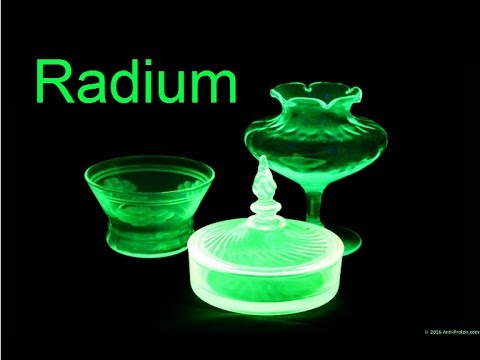
noun
- Chemistry. a highly radioactive metallic element whose decay yields radon gas and alpha rays. Symbol: Ra; atomic weight: 226; atomic number: 88.
- a lustrous rayon or silk fabric constructed in plain weave and used in women’s apparel, lining, and drapery.
noun
-
- a highly radioactive luminescent white element of the alkaline earth group of metals. It occurs in pitchblende, carnotite, and other uranium ores, and is used in radiotherapy and in luminous paints. Symbol: Ra; atomic no: 88; half-life of most stable isotope, 226 Ra: 1620 years; valency: 2; relative density: 5; melting pt: 700°C; boiling pt: 1140°C
- (as modifier)radium needle
radioactive metallic element, 1899, from French radium, named 1898 after identification by Marie Curie and her husband, formed in Modern Latin from Latin radius “ray” (see radius). So called for its power of emitting energy in the form of rays.
n. Symbol Ra
- A luminescent, highly radioactive metallic element found in minute amounts in uranium ores, used as a neutron source for some research purposes, and formerly used in cancer radiotherapy; its most stable isotope is Ra 226 with a half-life of 1,622 years. Atomic number 88.
Ra
- A rare, bright-white, highly radioactive element of the alkaline-earth group. It occurs naturally in very small amounts in ores and minerals containing uranium, and it is naturally luminescent. Radium is used as a source of radon gas for the treatment of disease and as a neutron source for scientific research. Its most stable isotope is Ra 226 with a half-life of 1,622 years. Atomic number 88; melting point 700°C; boiling point 1,737°C; valence 2. See Periodic Table.
A naturally occurring radioactive chemical element. Its symbol is Ra.
 Liberal Dictionary English Dictionary
Liberal Dictionary English Dictionary